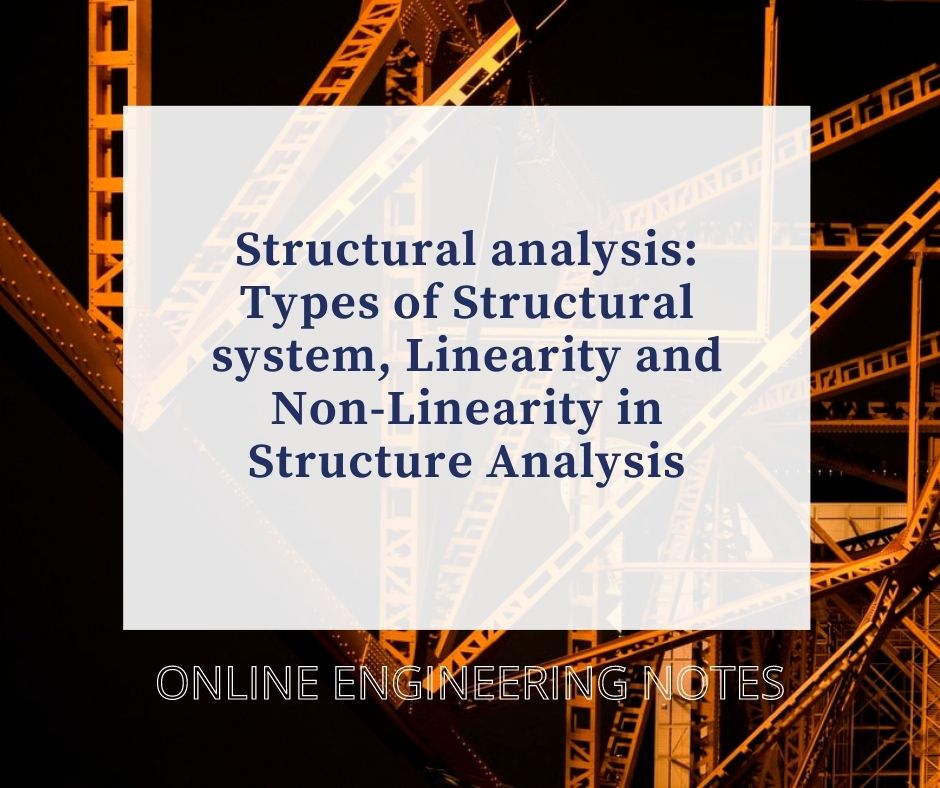Types of structure
The types of structure on the basic of materials used as follow:
- Steel structure
- Concrete structure
- Masonry structure
- Wooden structure
- Plastic structure
Structural Mechanics
Structure mechanics is the branch of mechanics that deals with forces and motion of structural system. It is the computation of deformations, deflections and of structural system. It is calculation of deformations, deflections and internal forces or stresses within structure for the estimation of existing structures.
Approaches of Structural Analysis:
Structural analysis can be classified are as follows:
- Force method
- Displacement method
- Force method
In this method, the number of independent unknown forces ( both external and internal) is found and is compared with the number of independent equation of static equilibrium that can be written involving these unknown forces. If the number of unknown is equal to the number of independent equations, the unknown forces can be directly determined. But, if the number of unknown forces exceeds the number of equilibrium equations, a number of unknown forces in excess to the equilibrium equations are designated as redundant forces and are assumed to be equilibrium equations are designated as redundant forces and are assumed to be equilibrium equations to obtain a statically determinate residual structure called primary structure. For each redundant, one equation is written in which the displacement of point of application of redundant is expressed in terms of known forces and the unknown redundant forces. Finally, these equations are solved to get the unknown redundant forces.
2. Displacement method
In this method, the independent unknown displacement components involved in the structure are estimated and these are considered as the unknown to be found. The internal forces in the structure are then expressed in terms of these unknown displacements, using the stress displacement relations. For each unknown displacements, using the stress displacement relations. For each unknown displacement component, a corresponding equilibrium is written in terms of known external forces and unknown internal forces which are expresses in terms of the displacement. These equations are solved to find the unknown displacement. Finally internal forces are calculated from the displacements.
Linear and Non-Linear Elastic Structure
If a system material has linear stress-strain relationships i.e. it obeys Hook’s law and undergo a small deflection of deformation is called linear elastic structure. For linear system, principle of superposition can be stationary applied.
Non-Linear system is the system is which is material does not have linear stress- strain relationships i.e. it does not obey Hook’s law and the deformation are so large that a change of geometry cannot be neglected in the analysis. Superposition principles does not hold good. If the non-linearity is due to stress-strain relationship, it is called material non-linearity and if the non linearity is due to considerable change in the geometry, it is called geometric non-linearity.
Computer Based Methods
- SAP( Structure Analysis Program)
This is a general purpose finite element program which is used for linear static and dynamic analysis of structures. Boundary condition can be assigned.
- STAAD Pro
It supports various steel, concrete and timber design codes. It can be used for static analysis geometric non-linear analysis or buckling analysis.
- NISA(Non-Linear Incremental Structural Analysis)
This software is used for non- linear analysis and buckling can be studied as well.
- EIABS
This software is mostly used for building (3-D analysis). Static earthquake loads can be considered in the analysis of structures.
Superposition Principles
It states that the displacement response resulting from number of force may be obtained by adding displacement resulting from individual force.
Where,
△ij = Deflection at i due to load at j
△1 = △11 +△12+△13
△2 = △21 +△22+△23
△3 = △31 +△32+△33

References: 1. Theory of Structure I, Dr. Kamal Bahadur Thapa

